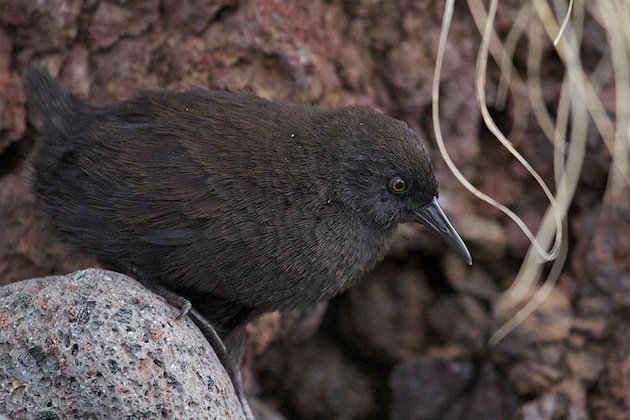
Inaccessible Island Rail Atlantisia rogersi by Brian Gratwicke
The Inaccessible Island Rail is perhaps the coolest bird that neither I nor anyone I will ever meet will ever see. The world’s smallest, still-extant, flightless bird is only found on the aptly-named Inaccessible Island, an island in the Tristan da Cunha archipelago of the south Atlantic Ocean (the largest island in the archipelago is also called Tristan da Cunha but people from the UK will recognize it as St. Helena). The island is not only inaccessible because of its remote location but also because of the huge cliffs that ring the island, making access to the interior, where Atlantisia rogersi lives, almost as difficult as getting to the island.
map, from BirdLife International, showing where, exactly, Inaccessible Island is
How does an Inaccessible Island Rail survive? Well, the sixteen square kilometers of Inaccessible Island on which it lives host, according to the most recent estimates, about 8,400 individuals. BirdLife International believes that this might be maximum population the species can reach, as it seems to completely saturate its range. Also from BirdLife International:
In general it prefers areas where vegetation, boulders or other landscape features at ground level provide tunnels in which to shelter and to breed. It forages in every available habitat including very short vegetation, boulder beaches and marshy areas…The diet comprises a wide range of invertebrates including earthworms and moths, centipedes, and a wide variety of insects and insect larvae, as well as berries and seeds.
So, essentially, the rail seems to be a habitat generalist on its small island, capable of exploiting a variety of food resources, and it is, generally, safe from predation. Occasionally the Tristan Thrush Nesocichla eremita will prey upon chicks from the two-egg nest of the Inaccessible Island Rail but this not enough in any way to threaten the species.
The Inaccessible Island Rail was first described in 1923 by British ornithologist Percy Lowe in the Bulletin of the British Ornithologists’ Club, of which he was editor at the time, in addition to his duties as Curator of Birds at the (British) Natural History Museum. Lowe is perhaps most famous for coining the term “Darwin’s Finches” when he published The finches of the Galapagos in relation to Darwin’s conception of species. Because Lowe was the first to describe Atlantisia rogersi it is sometimes called Lowe’s Rail, one of three alternate common names (the others being Atlantis Rail and Inaccessible Rail).
It is really Henry Martyn Rogers who deserves to be associated with the rail though (and he is, as Lowe did bestow the scientific name Atlantisia rogersi upon the rail). Rogers was a missionary minister in Tristan da Cunha, and after the Shackleton-Rowett expedition (the last expedition of the “Heroic Age of Antarctic Exploration”) stopped by the archipelago on the way back from Antarctica and failed to procure a specimen, well, let us turn to Lowe’s words:
Mr. G. H. Wilkins, the naturalist on board the Quest, was unable to procure specimens of the “Island Hen” on Inaccessible Island. So desirable was it, however, to find out what this flightless rail was like that he left collecting material with the late Rev. H. M. C. Rogers, then acting as resident chaplain on Tristan da Cunha, with a request that he would try every means in his power to get specimens at the first opportunity. As a result, two skins of an almost black and diminutive flightless rail arrived at the British Museum on July 5, 1923. From what had been previously gathered from past reports no one was very much surprised when this rail proved to be totally different in character from the so-called “Island Hen” (Porphyriornis nesiotis) which once lived upon Tristan da Cunha, and still lives upon Gough Island, though in a slightly different form, known as Porphyriornis comeri.
The diminutive and flightless rail which lives on Inaccessible Island and, as far as is known, nowhere else in the Atlantic, or for that matter in the whole world, is in fact not even generically allied to the moorhen-like gallinules just referred to. It is a true rail ; and besides this there is nothing specifically like it known to science, although it may be that certain rails living on islands in the Pacific Ocean may have sprung from the same original stock. It was for these and other reasons, therefore, that I referred this rail to an entirely new genus and species, naming it in honour of Mr. Rogers, who was the first to procure specimens of it with the object of making it known to science.
The bird will therefore now be known as
Atlantisia Rogersi
Now that we have discussed a bit about how the Inaccessible Island Rail lives and was first described for science it certainly couldn’t hurt to explore a bit more what it looks like. Wikipedia describes it as having “an average weight of 30 grams and a length of 17 centimeters. It is dark rusty-brown above and dark grey below, with a short black bill and a red eye.” The description on BirdLife International’s species fact sheet is a bit more involved:
17 cm. Small, very dark rail. Dark grey on underparts and dark rusty-brown on upperparts. Short black bill, greyish legs and red eye. Immature is overall brownish in colour with dark eye. Adults show various degrees of white barring on flanks and belly.
Henry Rogers left his own written description of the rail that bears his name:
the most interesting bird of all is the island cock, of which I was fortunate in procuring the first specimen known to science, and which we are going to send to South Kensington and the Cape. It is a small bird of the rail species, I think, wingless, unable to fly, but can run with great speed, shelters in the tussock, and lives in a burrow. Its eggs are not known, it does not migrate, and it feeds, I understand, on insects and worms. Its radius once extended to Tristan, but it is now solely found on Inaccessible.
More images and a short video of Atlantisia rogersi can be seen on ARKIVE.
Wim Van der Schot was kind enough to grant 10,000 Birds permission to use the photographs below.
Someday I hope to make the long journey to Inaccessible Island, which is generally accomplished by traveling to Cape Town, South Africa and catching a ride on a boat to Tristan da Cunha and then inveigling a local into providing transportation over to Inaccessible Island. Of course, I have to hope that rats or another mammalian predator don’t find their way to Inaccessible Island in the meantime, because that would almost surely be the end of this enigmatic and imagination-firing species.
If you happen to be making your way to Inaccessible Island and would like to take me along, well, I can be reached through the blog, and am willing to work in return for transport…please take me!
…
Sources used in writing this blog post:
Wikipedia, especially these entries: Tristan da Cunha, Inaccessible Island, Inaccessible Island Rail, Percy Lowe, and Shackleton-Rowett Expedition
BirdLife International‘s Inaccessible Island Rail species fact sheet
Birds of the World on Postage Stamps: Inaccessible Island Rail
Mangoverde World Bird Guide Inaccessible Island Rail species account
ARKIVE – Images of Life on Earth: Inaccessible Rail
Wikimedia Commons: Atlantisia rogersi
Wim Van der Schot’s World of Birds
The Lonely Island by Rose Annie Rogers (especially Appendix II)
(This post was first published in February 2010, but a bird this cool and inaccessible deserves more attention!)


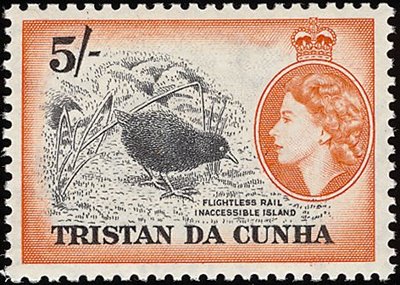
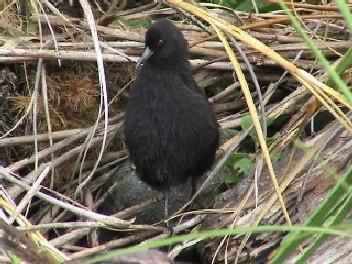
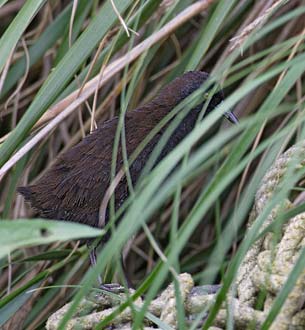
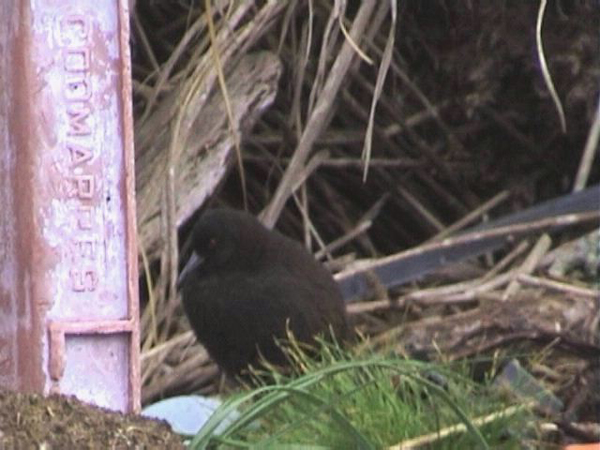
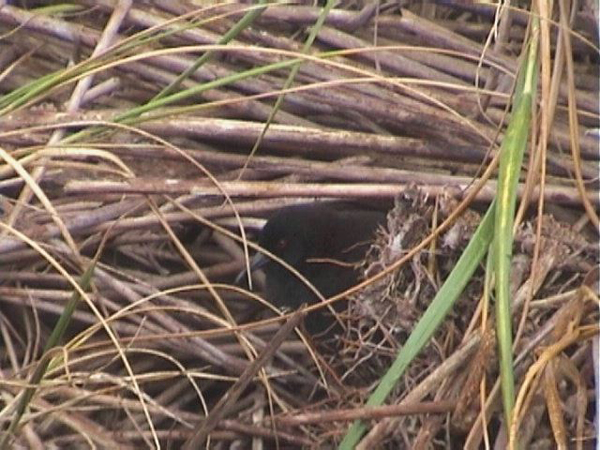
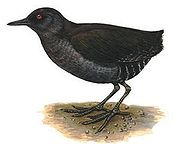










It’s pretty lucky. Rails have a long and distinguished history of reaching the most far-flung, inaccessible you might say, islands of the world and then losing the ability to fly. And then going extinct when humans and rats arrive. Today we still have the Weka, Takahe, Lord Howe Woodhen and Inaccessible and Guam Rails (the later only really in captivity) but David Steadman of Florida Museum has estimated that most islands in the Pacific had an endemic rail, between 800 and 1800 species, almost all of which are now lost.
Ain’t that a cutey pie!
Great post!
@Duncan: Even more lucky than the rare birder who gets to see one!
@OpposableChums: They are kind of cute, aren’t they?
@Patrick: Thanks!
I have never head of this bird before, but I know that rails can inhabit very inaccessible islands. Let us hope that some invasive predator does not show up, and start threatening them. It is a horror story of what happened on Guam, and Okinawa is not much better off.
I was there in april 2011 and lucky enough to get on the island. Allthough there must be plenty of rails they were not easy to find but we managed to find 2 birds!
Gr Toy
Brainbird!!!!
What a cool bird and post. Looks like a cross between a coot and a black rail.
I, like you Corey, will wash dishes, do laundry and carry bags for anyone who will take me there. I have a first cousin who was the island Doctor on Tristan for about 5 years and my grandfather was the island Doctor on St. Helena. Is it too late for us to become doctors?